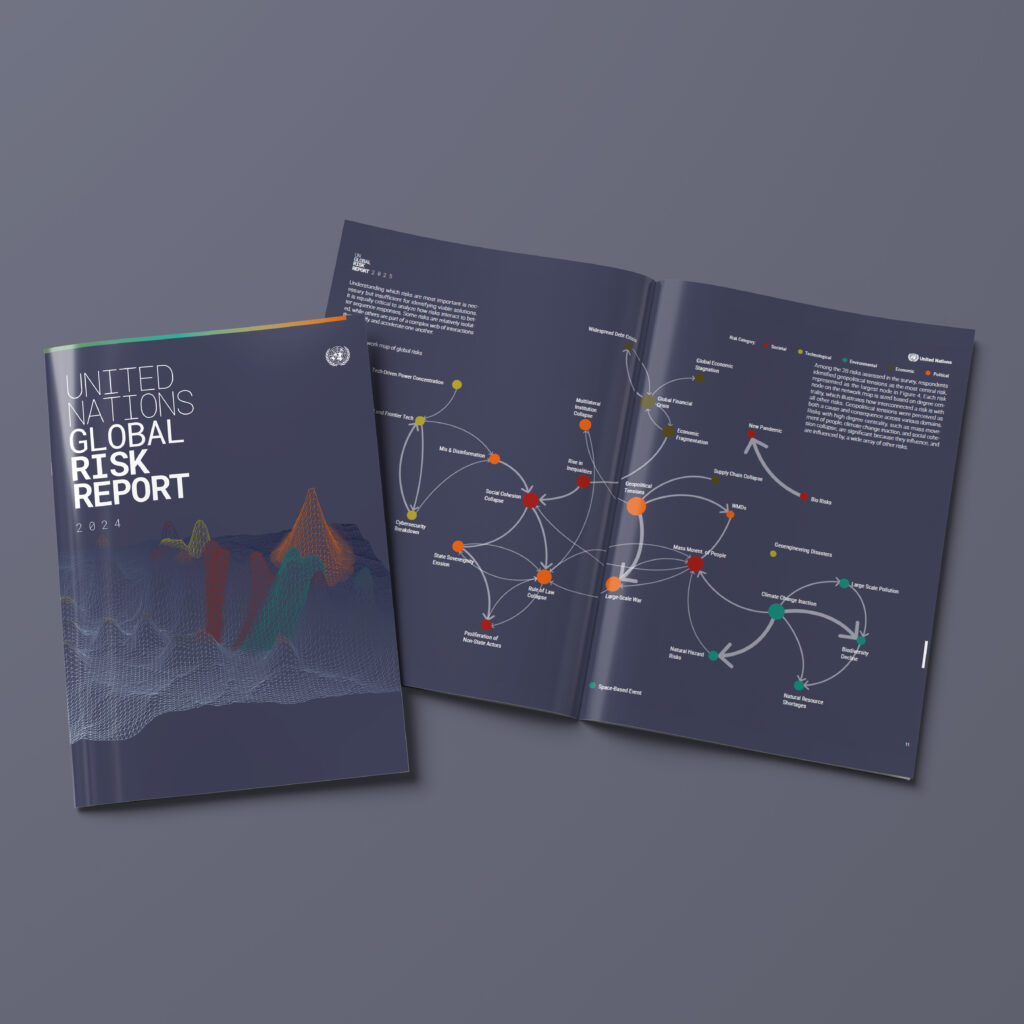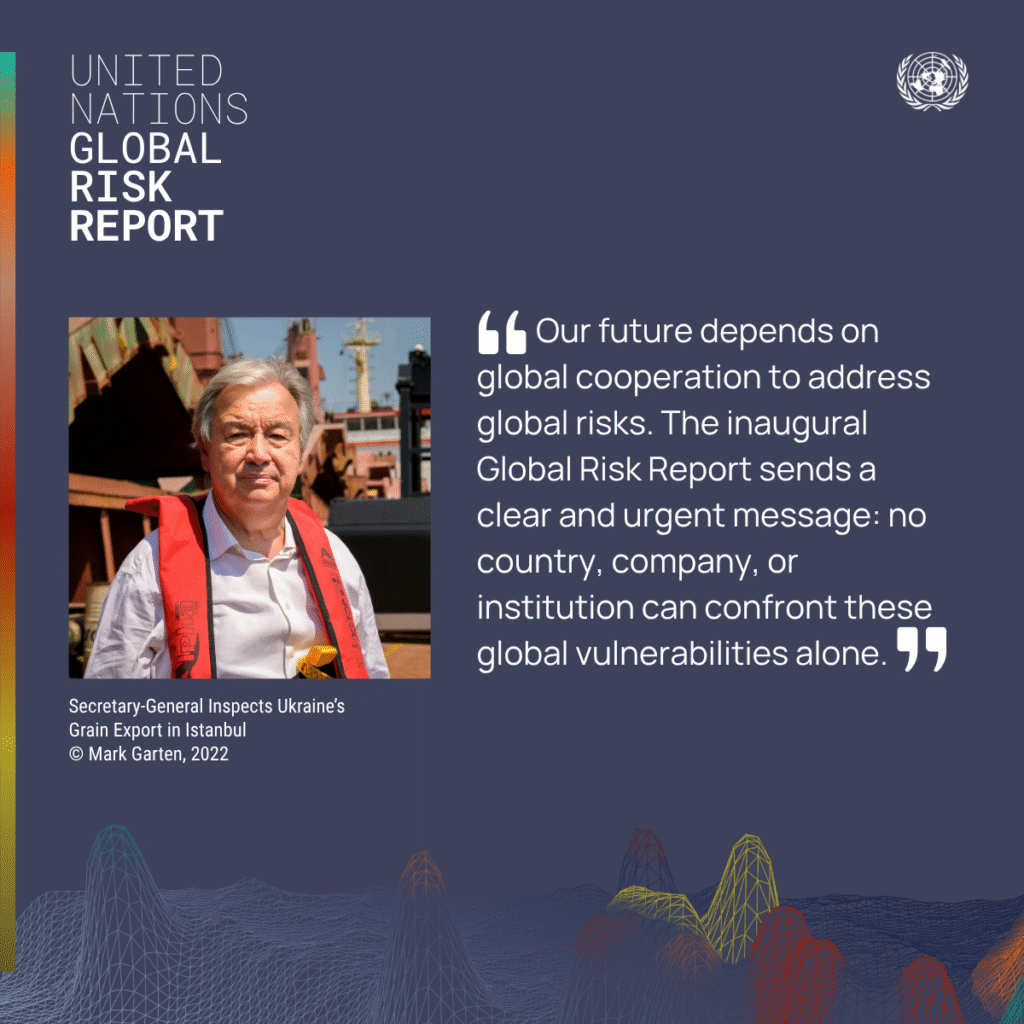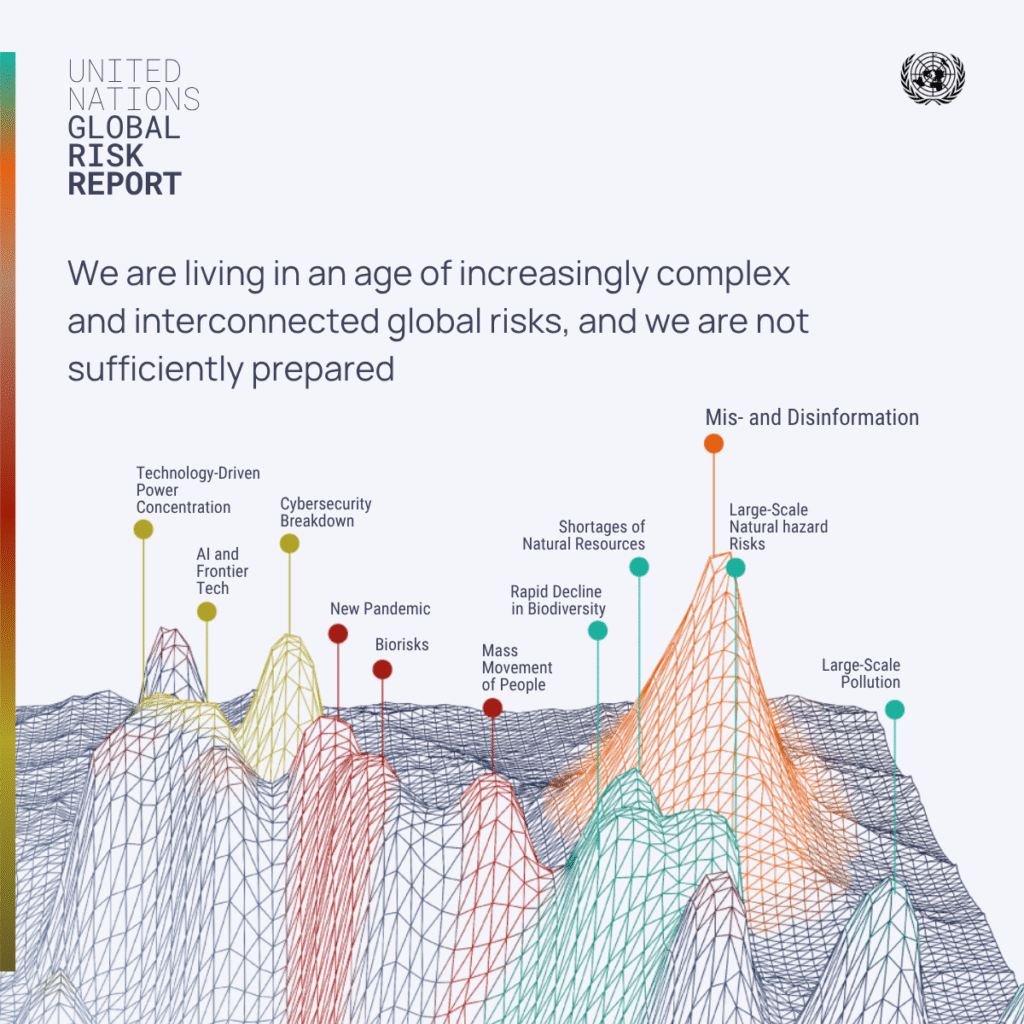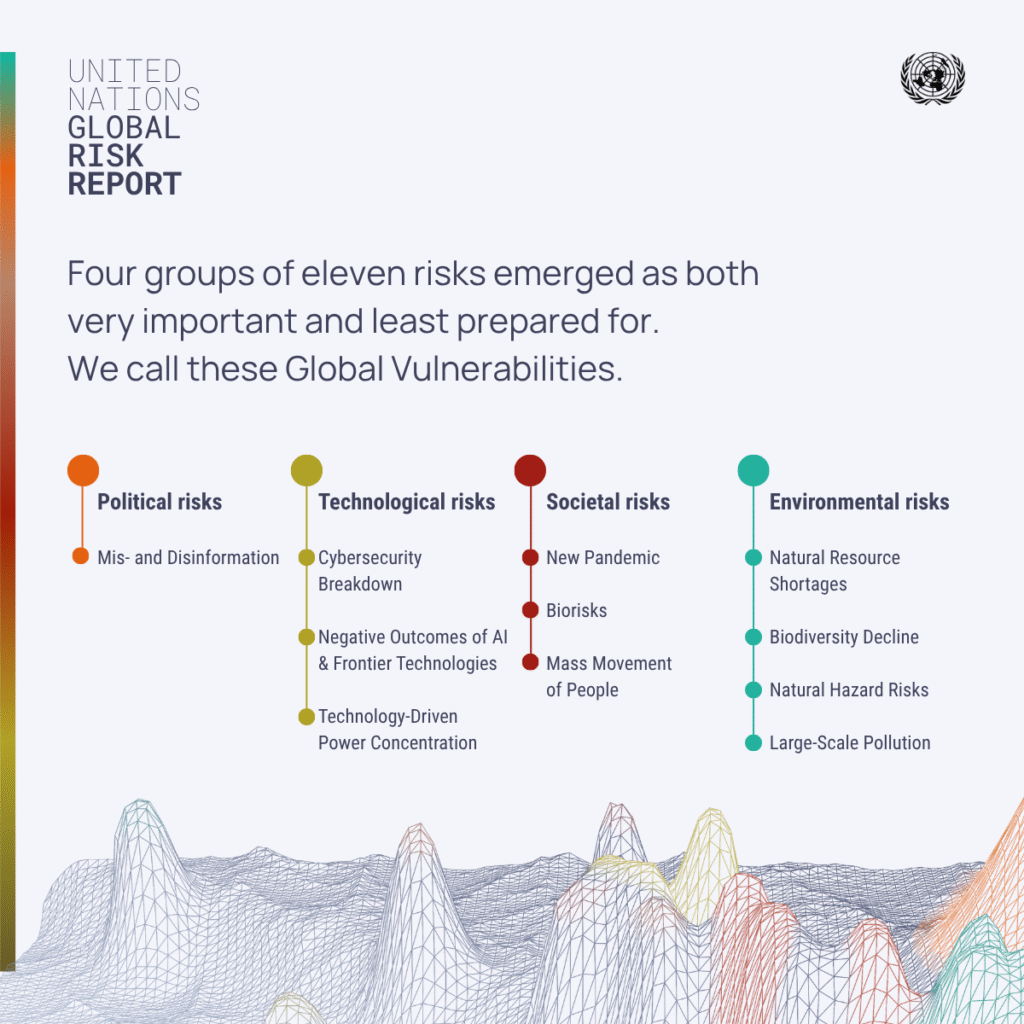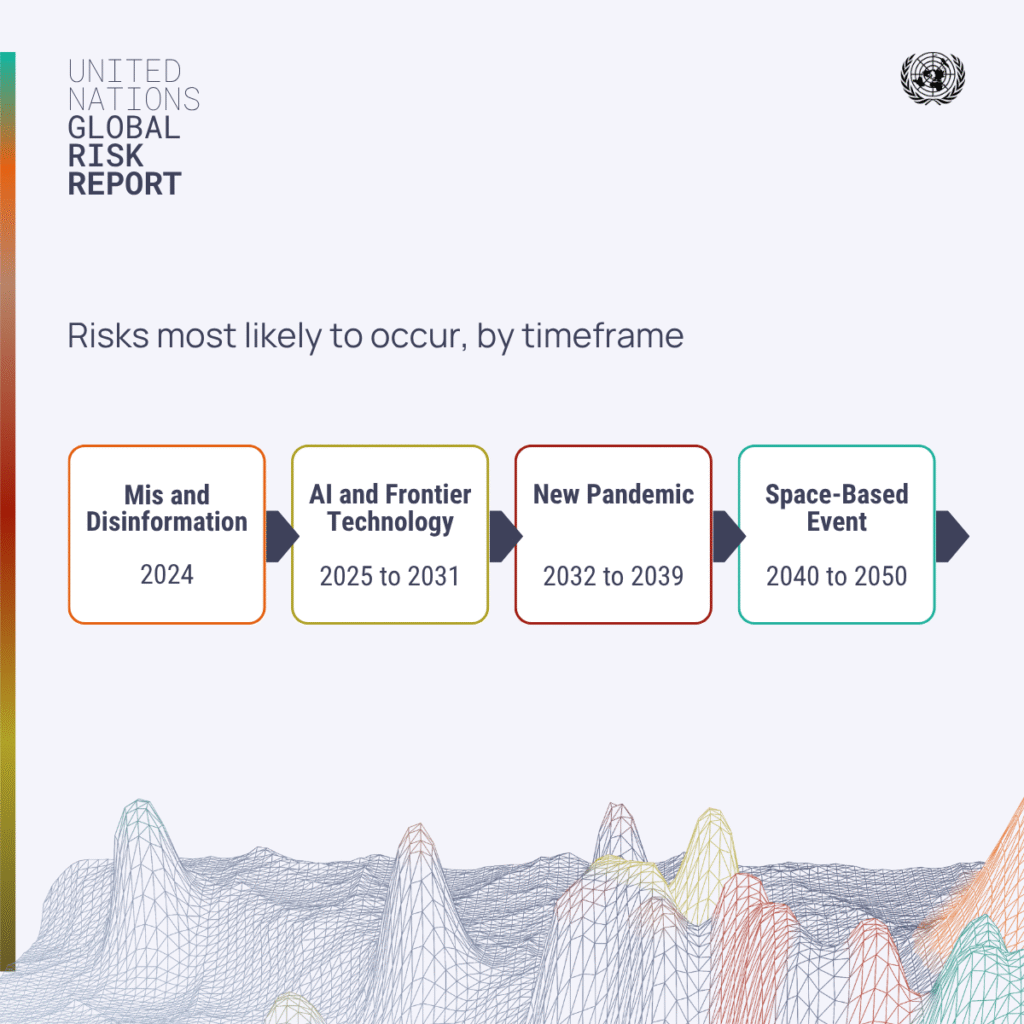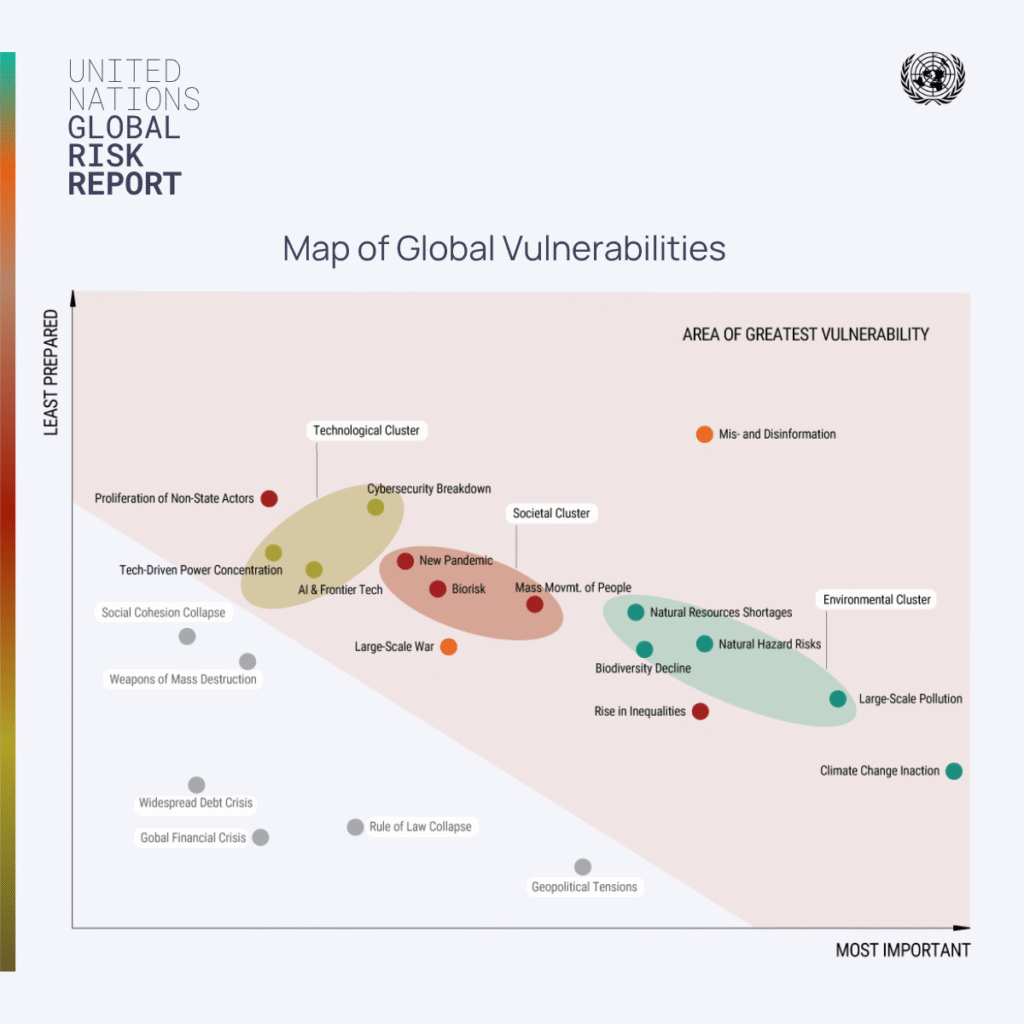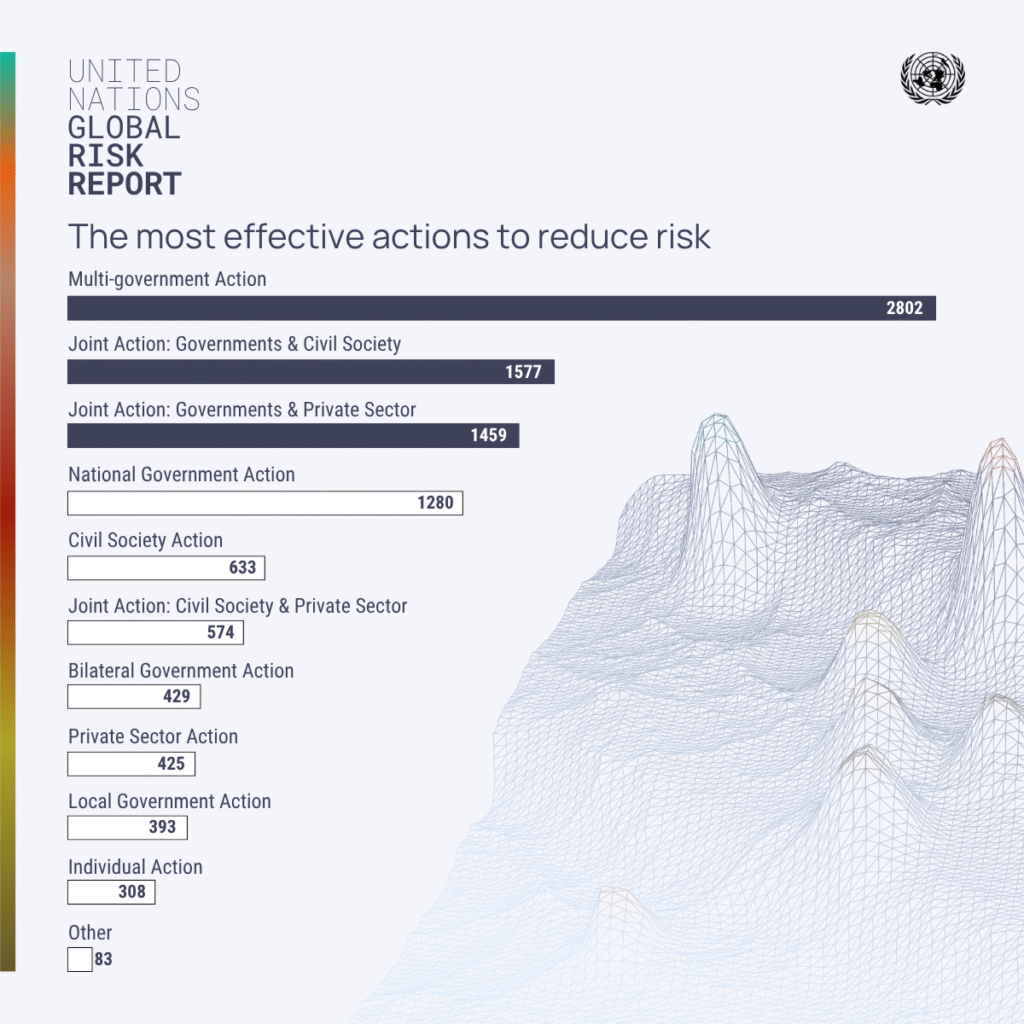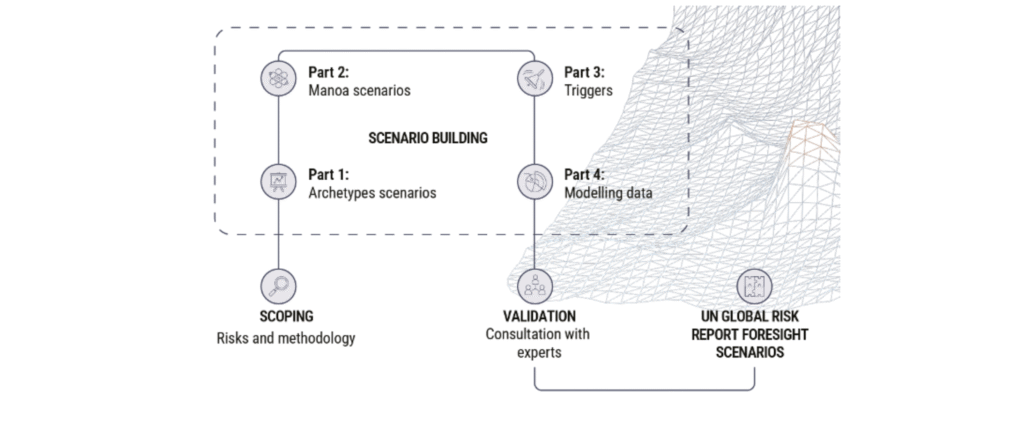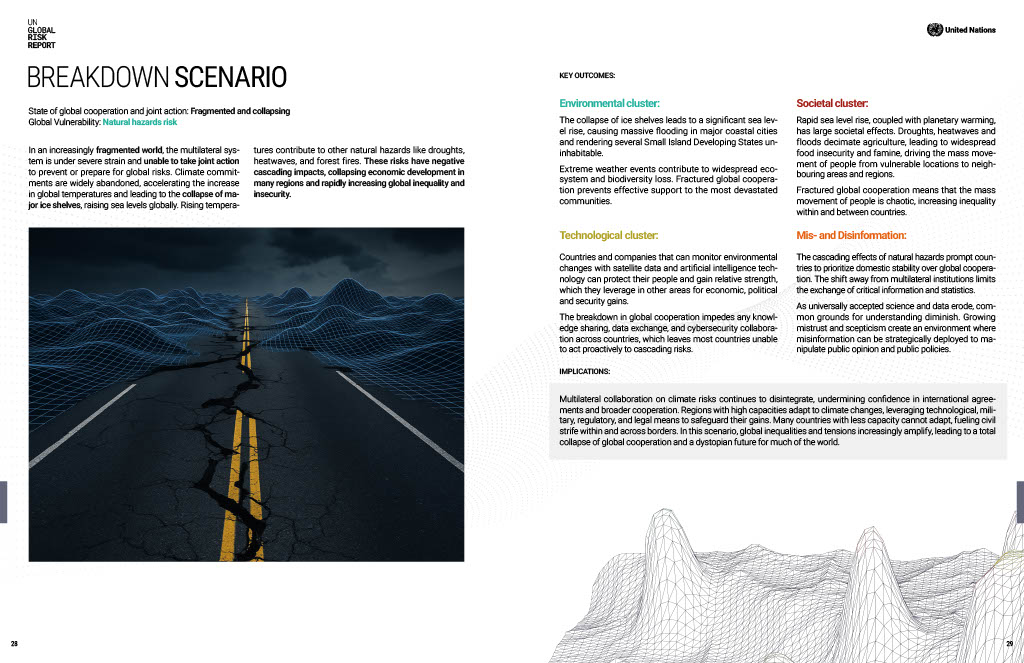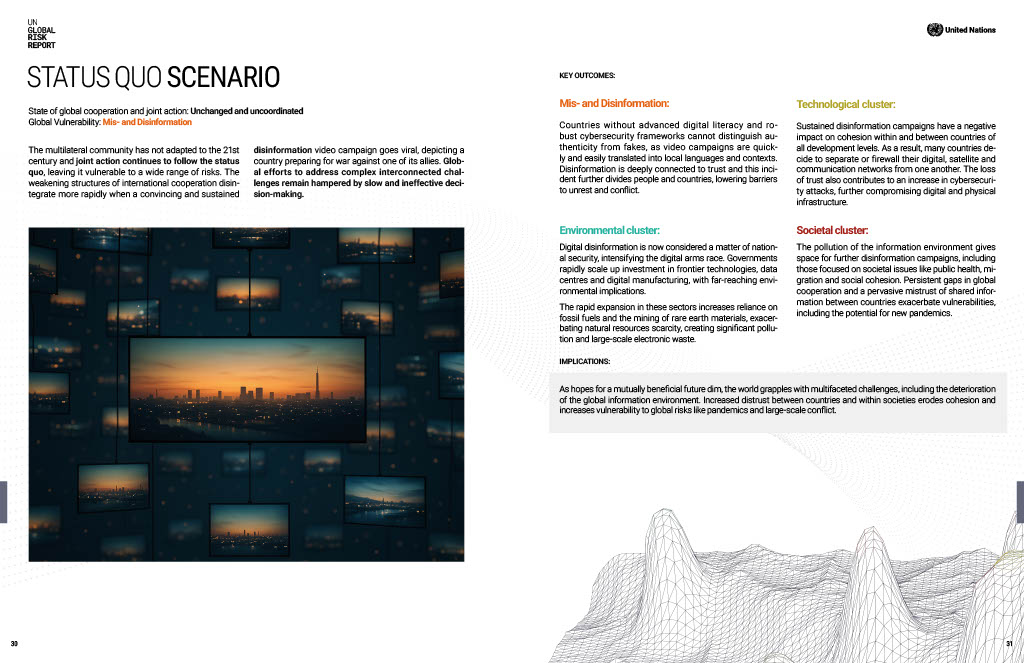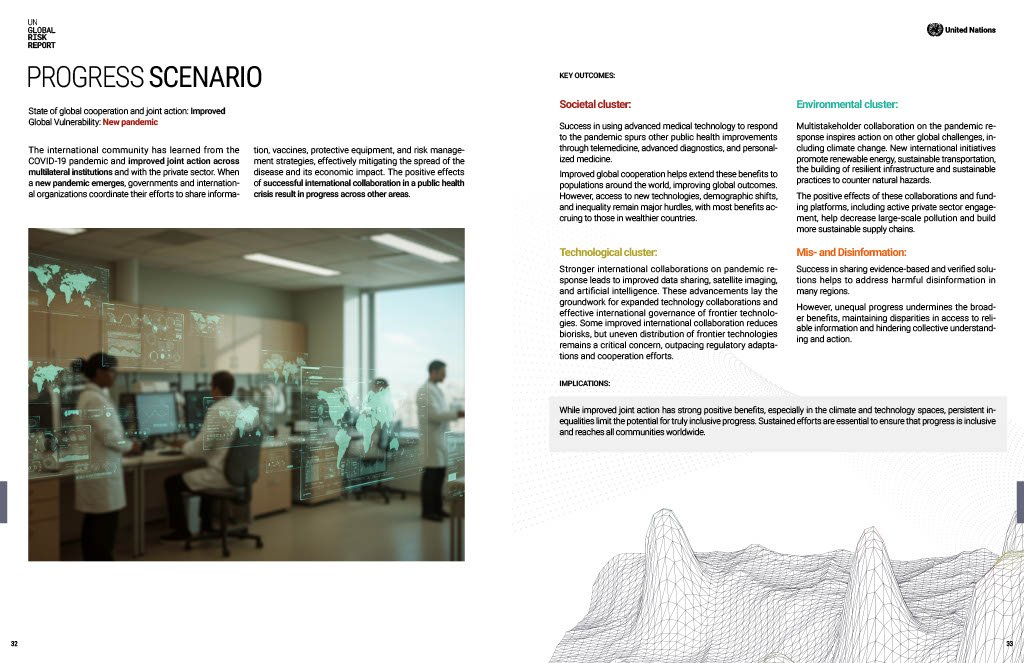[Report] UN Global Risk Report 2024


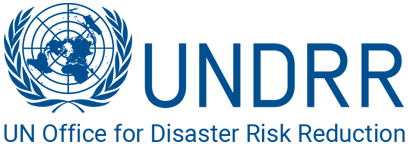



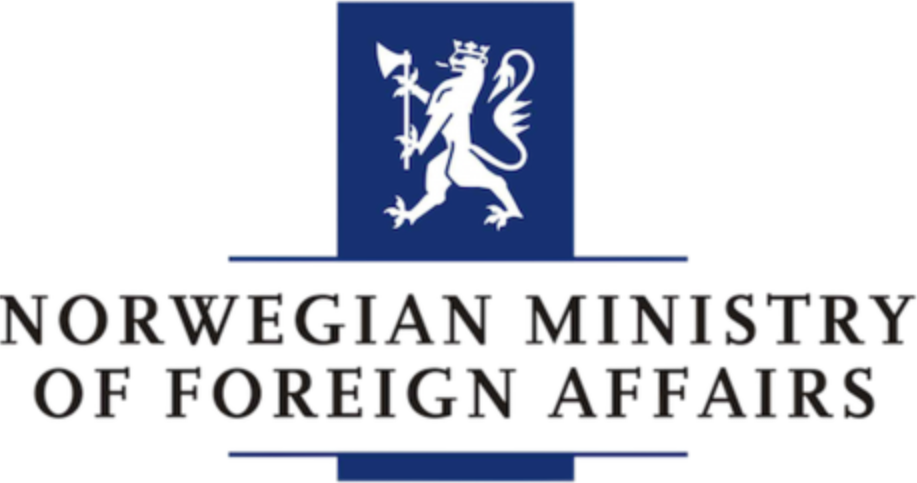
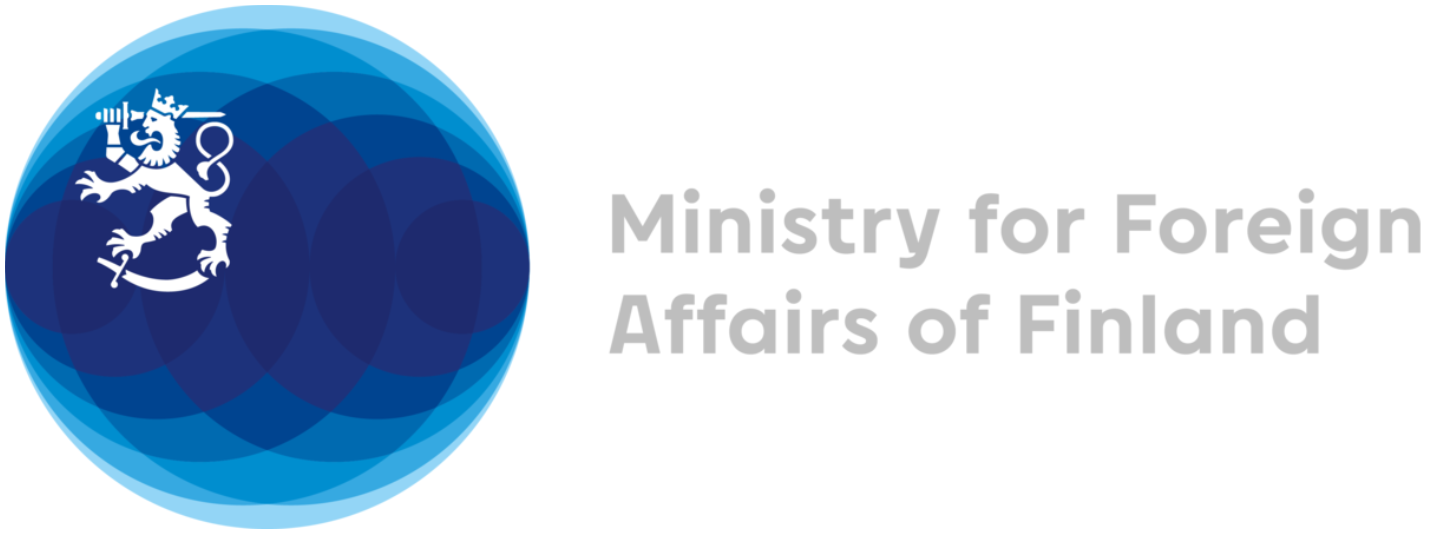

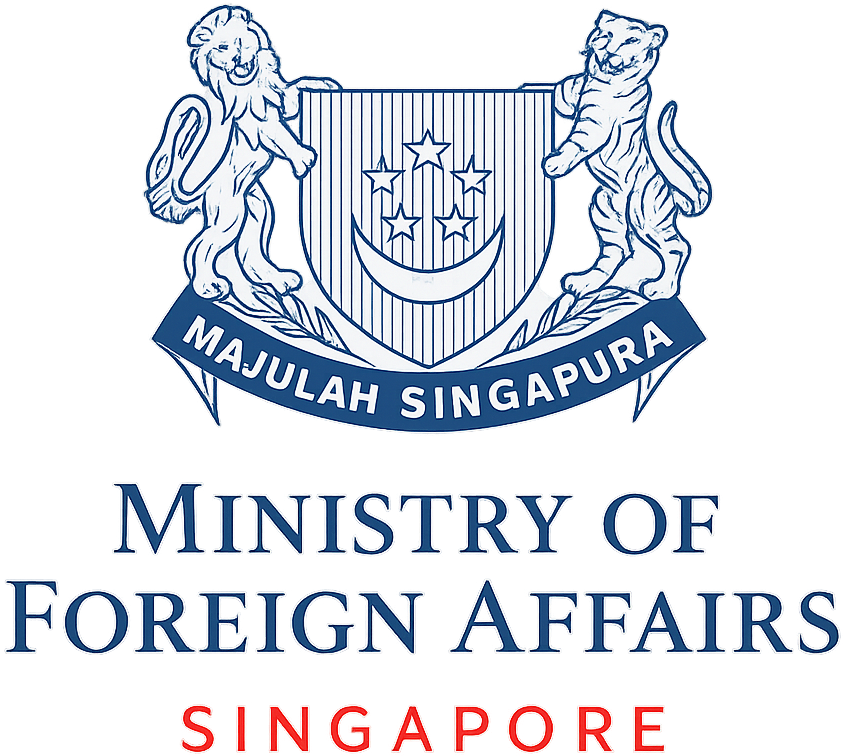
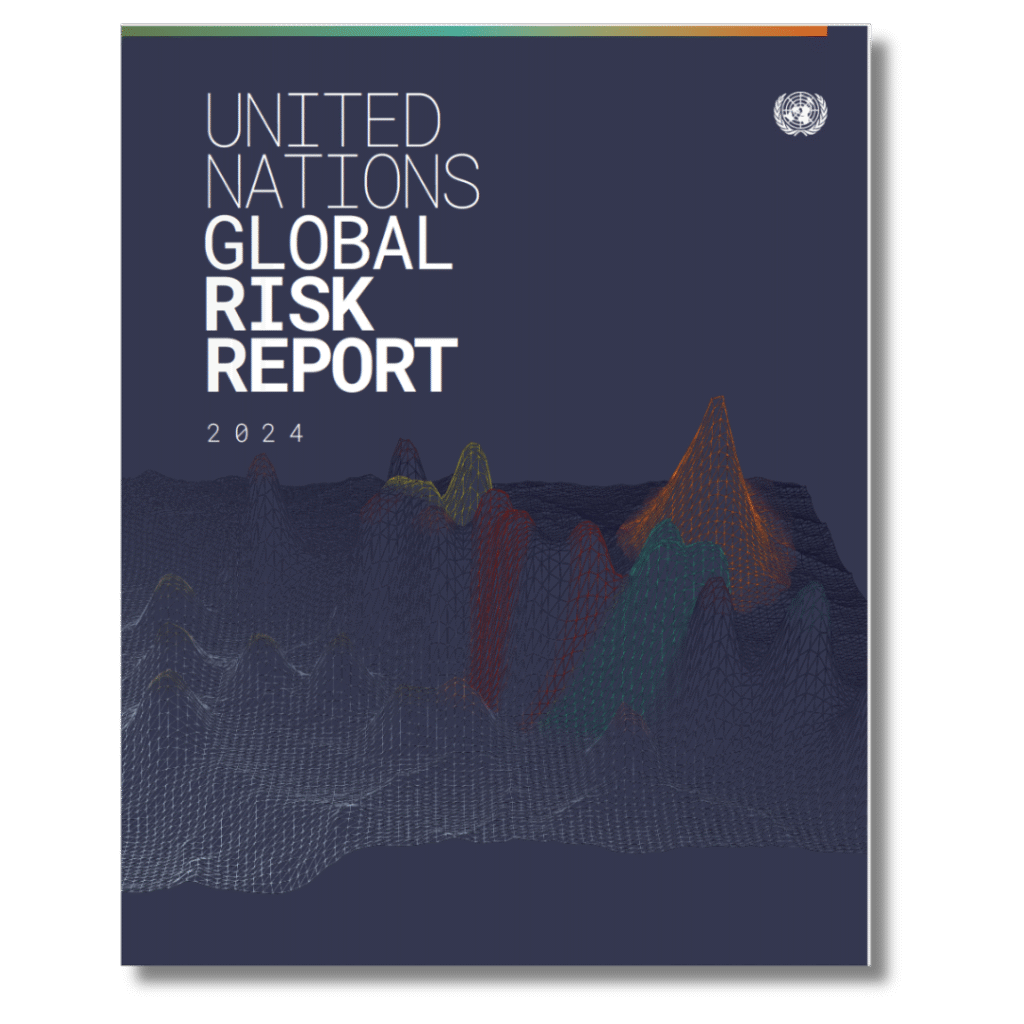
We are living in an age of increasingly complex and interconnected global risks. Multilateral institutions are not sufficiently prepared. The UN Global Risk Report 2024 identifies which risks are most important and for which risks the multilateral system is least prepared.
The message from the UN Secretary-General is stark: “Our future depends on global cooperation to address global risks. The inaugural Global Risk Report sends a clear and urgent message: no country, company, or institution can confront these global vulnerabilities alone. From climate disruption to pandemics and rapidly evolving frontier technologies, these risks are complex, interconnected, and growing. They require close cooperation and communication between countries to shape a better future for all.”
The UN Global Risk Report was developed by the Executive Office of the UN Secretary-General. The UN Futures Lab/Global Hub was a key partner in the report production process, including developing the four foresight scenarios featured in the report that: (i) analyze the implications for the multilateral system, (ii) provide a nuanced understanding of the Global Vulnerabilities with a focus on their interconnectedness, and (iii) support proactive planning, policy formulation, and decision-making.
Key highlights from the Report
Based on a global survey engaging over 1,100 stakeholders across 134 countries, the report reveals:
- Global Vulnerabilities arise when institutions are underprepared for important risks; they cluster across political, technological, societal, and environmental domains
- Many risks are already turning into crisis: Over 80 per cent of respondents identified mis- and disinformation, a top Global Vulnerability, as currently occurring
- Environmental risks are a priority across all regions: Five of the top 10 most important risks are environmental
- Multi-government action is seen as the most effective response to mitigate global risks and overcome barriers like weak governance and lack of prioritization
- Four foresight scenarios show how our joint action in confronting Global Vulnerabilities can lead to breakdown or breakthroughs
From survey insights to foresight scenarios
The UN Global Risk Report began by identifying the most important risks and those for which we are least prepared – called Global Vulnerabilities. The report then considered which actions would most help address these Global Vulnerabilities and how to overcome barriers to action. Survey findings overwhelmingly pointed to joint action between States and diverse stakeholders as the best way forward. Building on these insights, the UN Futures Lab/Global Hub developed the four foresight scenarios:
- Scenarios are not predictions. They are tools to help us understand how the future may evolve, so we can prepare not for one but multiple possibilities
- Scenarios connect perceptions, actions, and possible outcomes, highlighting the crucial role of joint action
- No scenario assumes a perfect outcome. Without efforts to address structural inequalities, long-term progress remains challenged
- The scenarios move beyond binary futures, revealing a spectrum of plausible, complex futures
Scenario building methodology
The UN Futures Lab/Global Hub developed the scenarios using a hybrid approach, integrating elements from three established foresight methodologies (Archetype Scenarios by Jim Dator [2009], Manoa Scenarios by Wendy Schultz [2003], and Triggers) and modelling data from Denver University’s International Futures integrated modelling framework (IFs) in order to:
- Frame four distinct future patterns for the evolution of the multilateral landscape using Archetype Scenarios
- Delve deeper into the dynamics of risks interactions within each scenario using Manoa Scenarios
- Include potential outlier events or triggers that could significantly alter the global risk landscape and for which the multilateral system may be least prepared
- Strengthen the robustness of the scenarios by integrating modelling data from Denver University’s International Futures integrated modelling framework (IFs)

Four foresight scenarios – from Breakdown to Breakthrough
The four foresight scenarios presented in the UN Global Risk Report – Breakdown, Status Quo, Progress, and Breakthrough – illustrate how more or less joint multilateral action could impact each of the Global Vulnerabilities by 2050. Each scenario prominently features a risk from the Global Vulnerability clusters (natural hazard risks, mis- and disinformation, new pandemic, and cybersecurity incident) and shows how one risk can positively or negatively cascade across others.
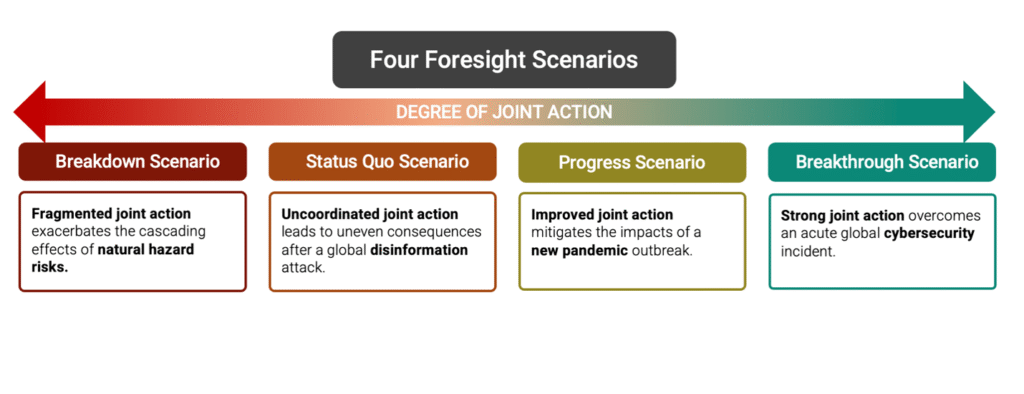
Why do these four scenarios matter?
The stark differences between these possible futures highlights a critical choice: Will the world choose breakdown, maintain the status quo, or break through to a more prosperous, greener and safer world for current and future generations?
